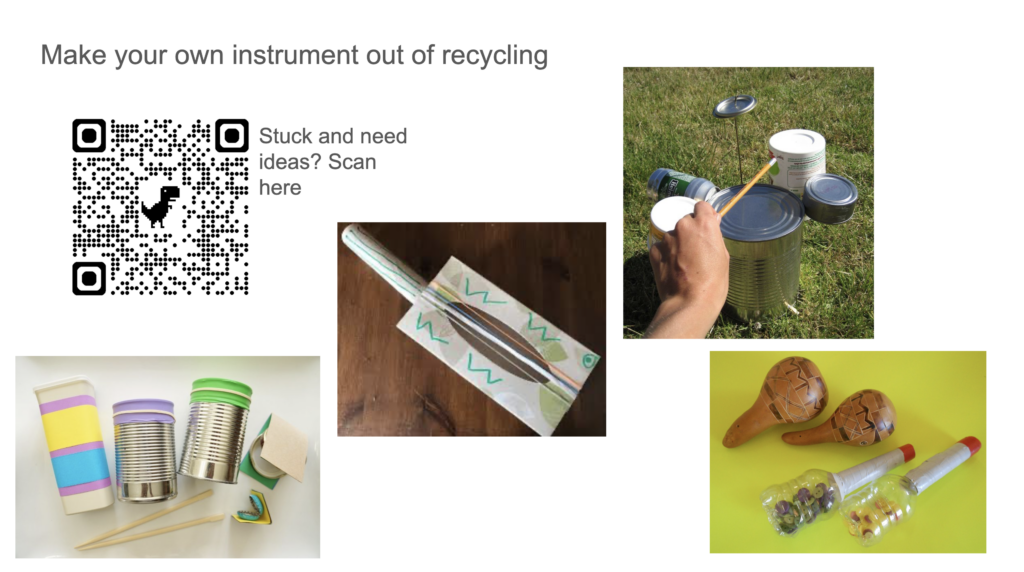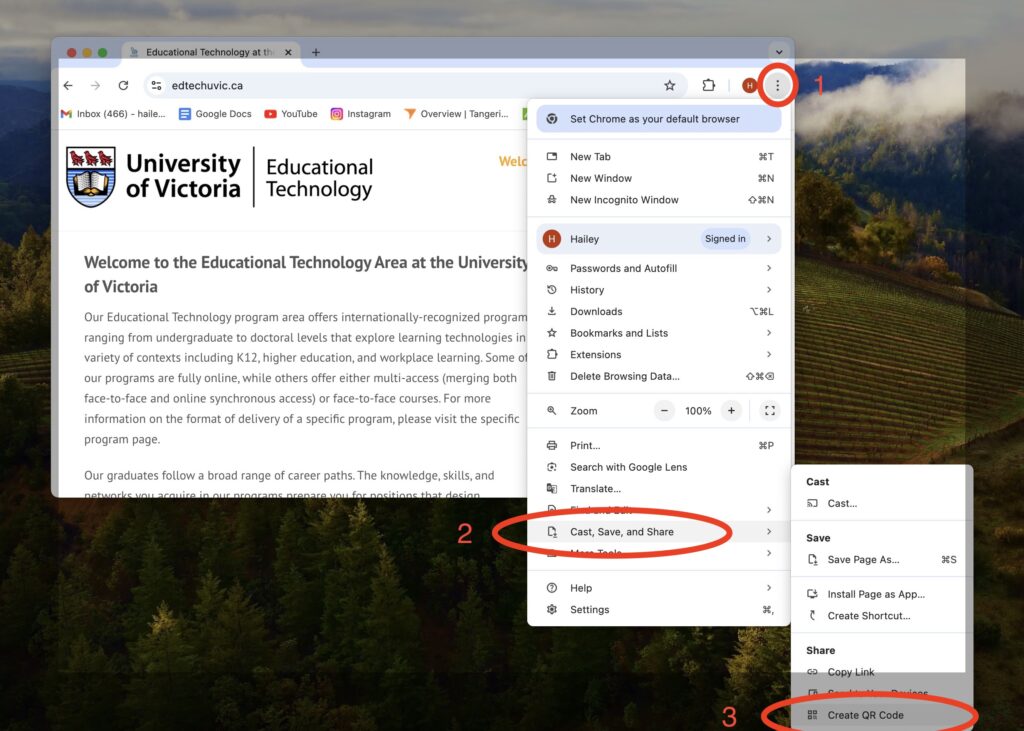
Screenshot of a QR code in one of my Google Slide presentations for a class in the Uvic BEd program
A Very Quick Tutorial
I cannot believe how easy it is to make QR codes. Like most technology, before I did it for the first time it seemed mystical, powerful, inscrutable. However, it’s something you can do in a minute flat. Because our tutorial list focused on using an IOS app called Shortcuts which I do not have access to, I’ll provide a quick break down of making QR codes from a Google Chrome browser.
- Open your Google Chrome browser
- Go to the page you would like your QR code to link to
- Click the vertical … to open the Chrome settings
- Hover over “Cast, Save and Share
- Select “Create QR Code”
- A new window will pop up
- Select “copy”
- Paste the QR code directly into your document or slideshow


Ways to use QR codes for Teaching and Learning
Linking content: I have primarily been using QR codes to link students to additional information (like instructions, examples, or websites with helpful tools) from a slideshow presentation. This has been extremely helpful for cutting down on the need to print handouts and other information needed for activities. But there are other uses I have yet to try!
Scavenger hunts: I really want to try out a scavenger hunt type activity. You can print out and tape up QR codes around your classroom, school, or neighbourhood and have student seek them out and scan them for information about that geographic location, or it can be more symbolic, perhaps with stations around your classroom where a student scans a QR code to link them to a different story from a historical figure. This gets kids moving around and exploring the world in order to find information, and can be much more engaging than simply working on a computer, clicking a link, and reading.
Assessments of Learning: Another thing I would like to try is using a QR code to quickly link students to tools like Metimeter or an online survey where I can gather information. I’ve seen Metimeter used to gather emojis to quickly assess how students are feeling about a particular topic, or to create a word cloud showing what students already know about a subject.
At the Expense or Aid of Accessibility?
Honestly, the amount of printed worksheets, information handouts, and other random supplies that teachers generally need and use is huge. I’m a big fan of cutting down on both costs and waste. Why print out an information sheet that will end up in a recycling plant if we are lucky, and a landfill if we aren’t? It literally takes 4 clicks of my mouse to create a QR code.
One of the issues with using QR codes is that it does necessitate the use of a smartphone or tablet for scanning and accessing the encoded information. Not all students will have access to this technology, and as educators we need to be aware of that reality and to be sensitive to it. Group work where only one person needs a scanning device, or having tablets available to use could help get around this problem.
On the flip side, providing digital copies of material means that students with visual or reading challenges can employ text-to-speech and other accessibility software that wouldn’t be possible with printed worksheets.
Overall the convenience factor of using QR codes in the classroom seems high. I hope you try your hand at creating one! Comment below if there are any potential uses or drawbacks I haven’t thought of.
Sorry, but comments are not enabled on this site.